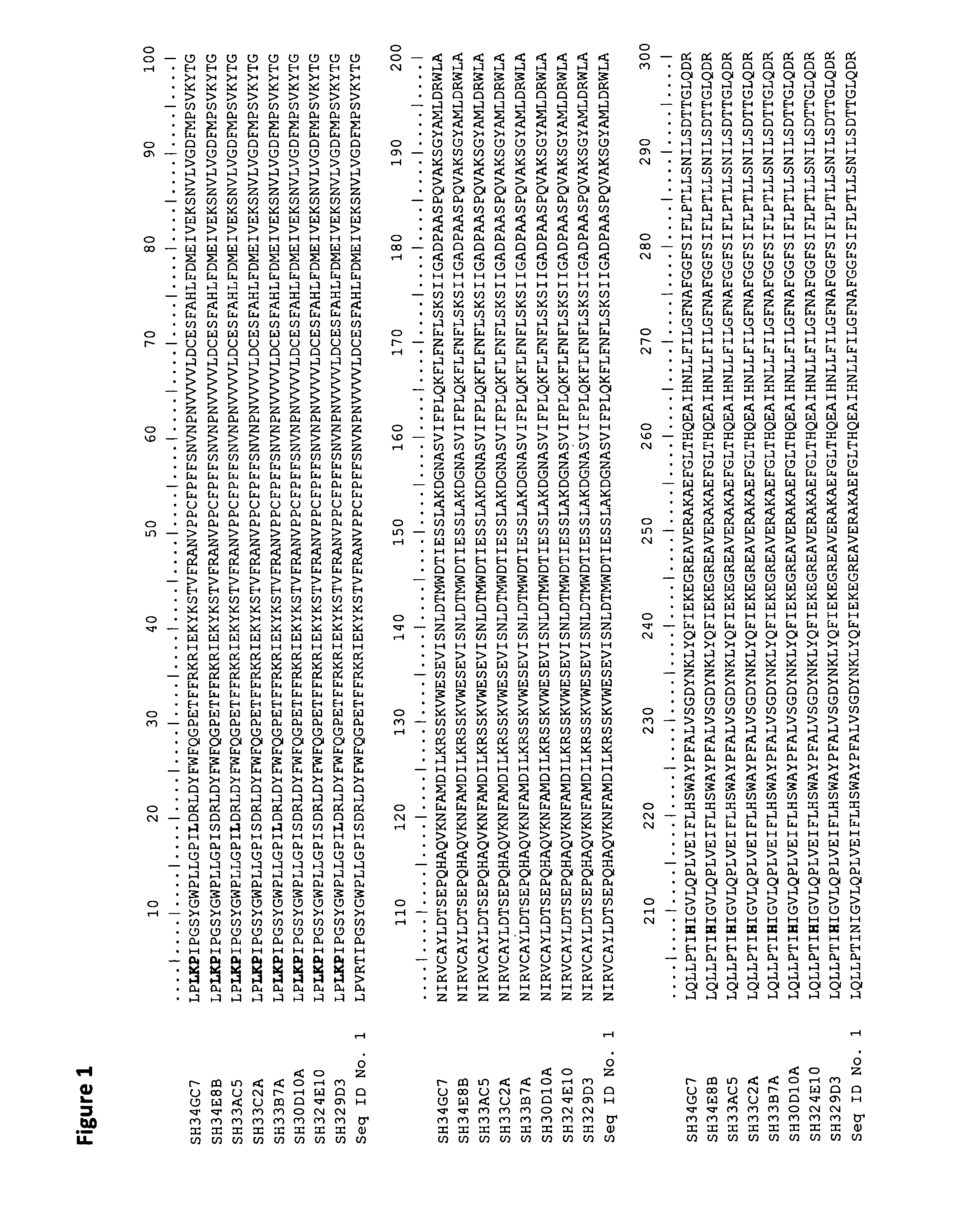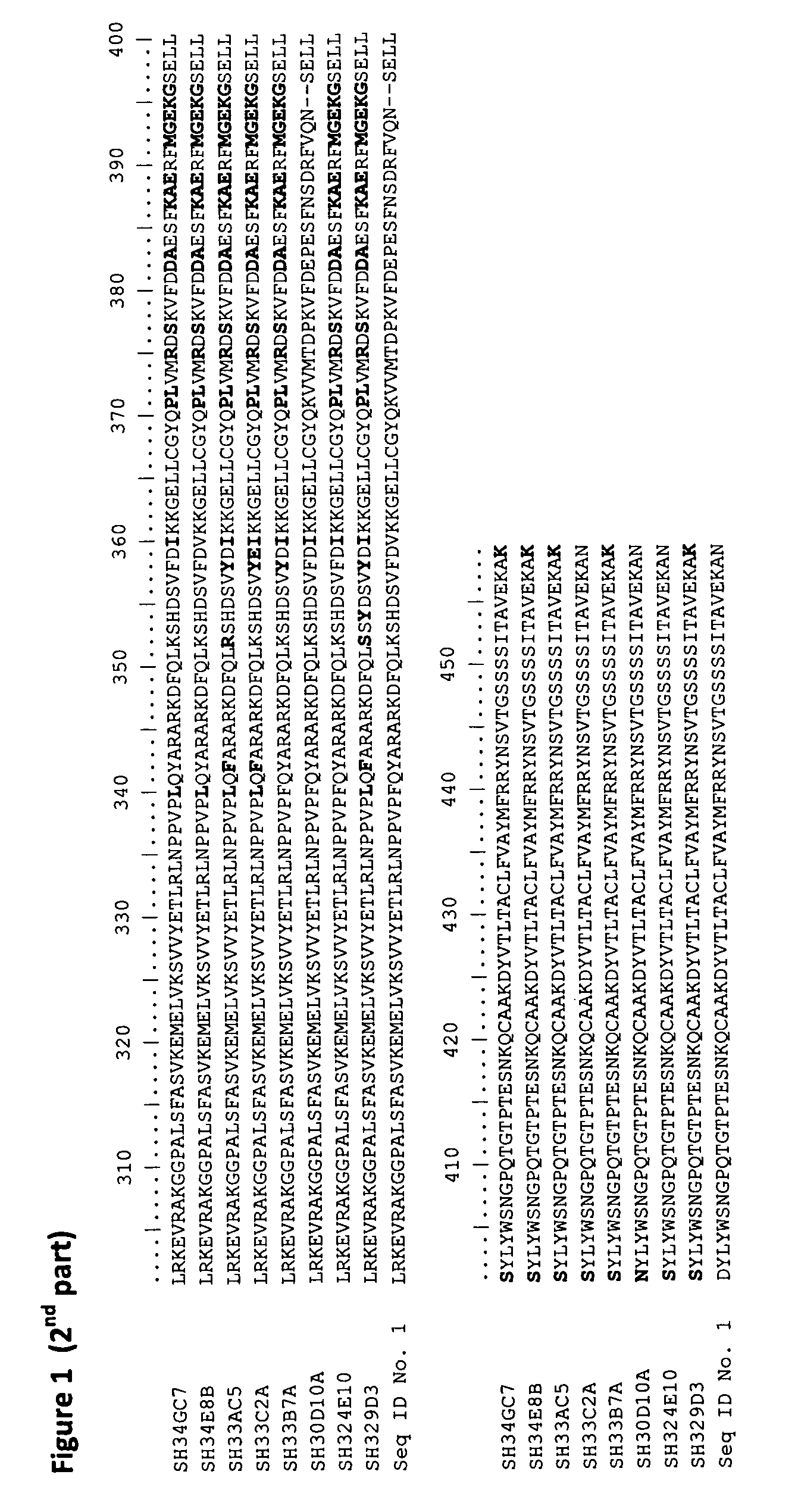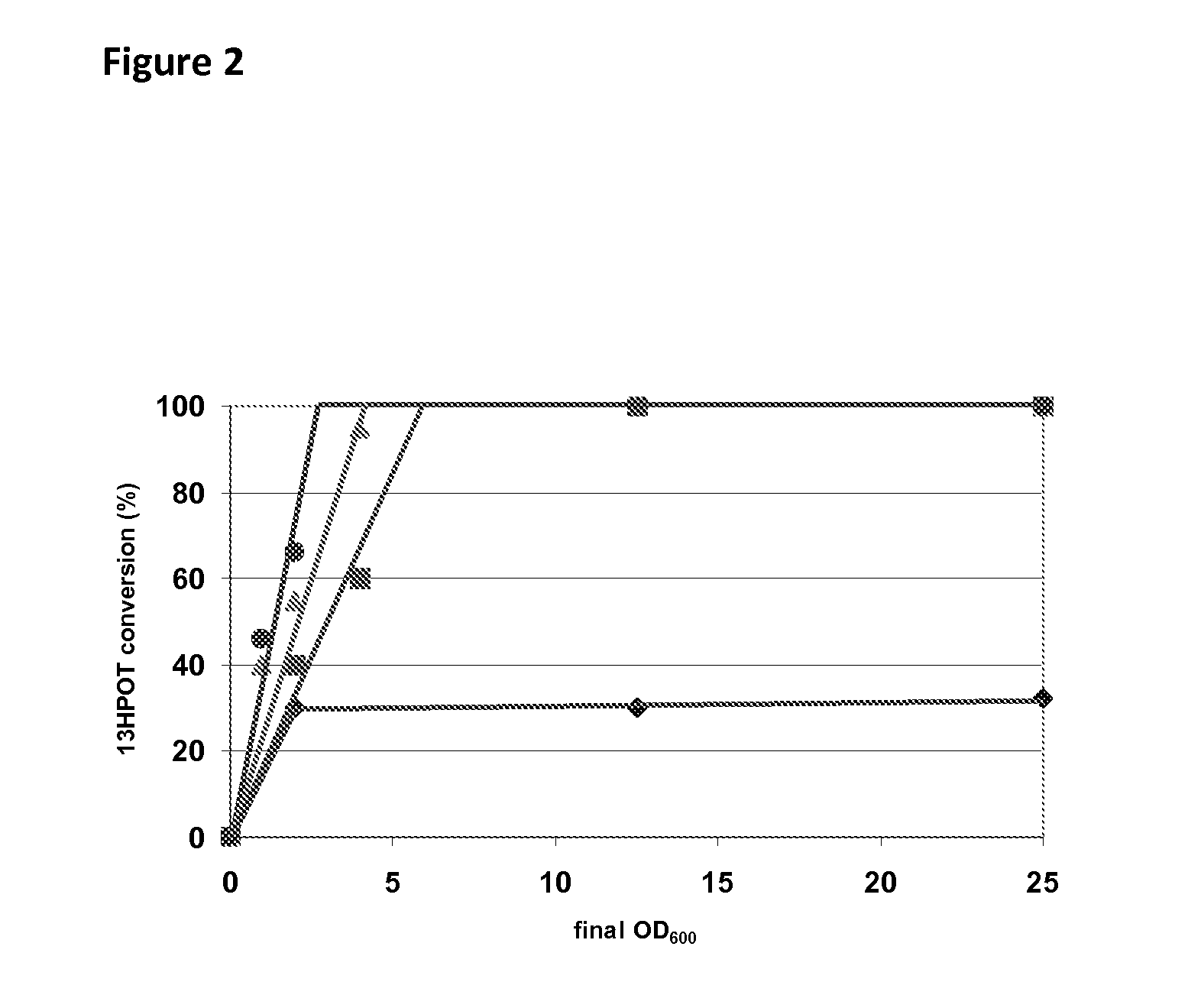Modified 13-hydroperoxide lyases and uses thereof
a technology of lyase and lyase, which is applied in the field of modified 13-hydroperoxide lyase proteins, can solve the problems of large quantity of fresh guava fruit, limited availability, and diluted desired enzyme activity, and achieves the effects of improving expression, catalyzing the cleavage of a molecule, and improving enzymatic activity
- Summary
- Abstract
- Description
- Claims
- Application Information
AI Technical Summary
Benefits of technology
Problems solved by technology
Method used
Image
Examples
example 1
Molecular Evolution of Wild-Type Guava 13-Hydroperoxide Lyase
[0142]The modified 13-hydroperoxide lyases of the present invention were obtained by several rounds of mutagenesis and shuffling of the DNA coding for the guava 13-hydroperoxide lyase according to SEQ ID No. 1 and additional DNA sequences coding for a 9-hydroperoxide lyase from C. melo and DNA sequences coding for 13-hydroperoxide lyases from C. sinensis and N. attenuata. The mutagenesis steps were performed by subjecting the DNA to the EvoSight™ method as described in WO 2006 / 003298. DNA shuffling steps were performed by subjecting the DNA to the L-Shuffling™ method as described in WO 00 / 09679. DNA coding for the guava 13-hydroperoxide lyase according to SEQ ID No. 1 was fragmented, mixed with fragmented additional DNA coding for a 9 or 13-hydroperoxide lyase from C. melo, C. sinensis and N. attenuata and reassembled through recursive steps of denaturation / hybridization on a matrix / ligation. High-throughput screening of t...
example 2
Cloning of the Modified 13-Hydroperoxide Lyases into Appropriate Expression Vectors
[0143]The nucleotide sequences coding for the modified 13-hydroperoxy lyases GC7, E8B, AC5, C2A, B7A, D10A, E8B and 9D3 as depicted in SEQ ID Nos. 3, 5, 7, 9, 11, 13, 15 and 17, respectively, were cloned into the vector pMAL-c2X (New England Biolabs) by using a 5′ linker containing an EcoRI site and a 3′ linker containing a BamHI site. The list of the different plasmids obtained is shown in Table 1.
[0144]
TABLE 1Examples of recombinant plasmidsPlasmidDescriptionpB7#AEcoRI -BamHI fragment B7#A in pMAL-c2XpAC#5EcoRI -BamHI fragment AC#5 in pMAL-c2XpC2#AEcoRI -BamHI fragment C2#A in pMAL-c2XpE8#BEcoRI -BamHI fragment E8#B in pMAL-c2XpGC#7EcoRI -BamHI fragment GC#7 in pMAL-c2XpD10#AEcoRI -BamHI fragment D10#A in pMAL-c2Xp4E#10EcoRI -BamHI fragment 4E#10 in pMAL-c2Xp9D#3EcoRI -BamHI fragment 9D#3 in pMAL-c2XpWTEcoRI -BamHI DNA fragment coding for the proteinof SEQ ID NO: 1 with an N-terminal insertioncompri...
example 3
Fatty Acid Hydroperoxide Cleavage by the Modified 13-Hydroperoxide Lyases as Compared to the ‘Wild-Type’ Enzyme
Experiment 1
[0145]E. coli MC1061 cells transformed with the plasmids pB7#A, pAC#5, pC2#A, pE8#B, pGC#7, p4E#10, p9D#3, pD10#A and pWT of Table 1 were cultivated in shake flask cultures in 25 ml of LB medium with 100 ppm of ampicillin at 180 rpm and at 20° C. for 30 hours without induction. Cultures were centrifuged and the pellet re-suspended in 100 mM phosphate buffer pH 7.6 and adjusted to an optical density of OD600=10 for all transformed cells except those transformed with the plasmid pD10#A, for which the optical density was adjusted to OD600=25. The catalytic activity of the 13-HPOL enzyme variants was determined as follows: 100 μl (10% v / v) of cell suspension (OD600=10, respectively OD600=25) were added to 900 μl of a solution containing 84.3 g kg−1 of fatty acid hydroperoxides (including about 75% of the substrate 13-HPOT) previously produced with linseed oil hydrol...
PUM
| Property | Measurement | Unit |
|---|---|---|
| temperature | aaaaa | aaaaa |
| temperature | aaaaa | aaaaa |
| volume | aaaaa | aaaaa |
Abstract
Description
Claims
Application Information
 Login to View More
Login to View More - R&D
- Intellectual Property
- Life Sciences
- Materials
- Tech Scout
- Unparalleled Data Quality
- Higher Quality Content
- 60% Fewer Hallucinations
Browse by: Latest US Patents, China's latest patents, Technical Efficacy Thesaurus, Application Domain, Technology Topic, Popular Technical Reports.
© 2025 PatSnap. All rights reserved.Legal|Privacy policy|Modern Slavery Act Transparency Statement|Sitemap|About US| Contact US: help@patsnap.com



